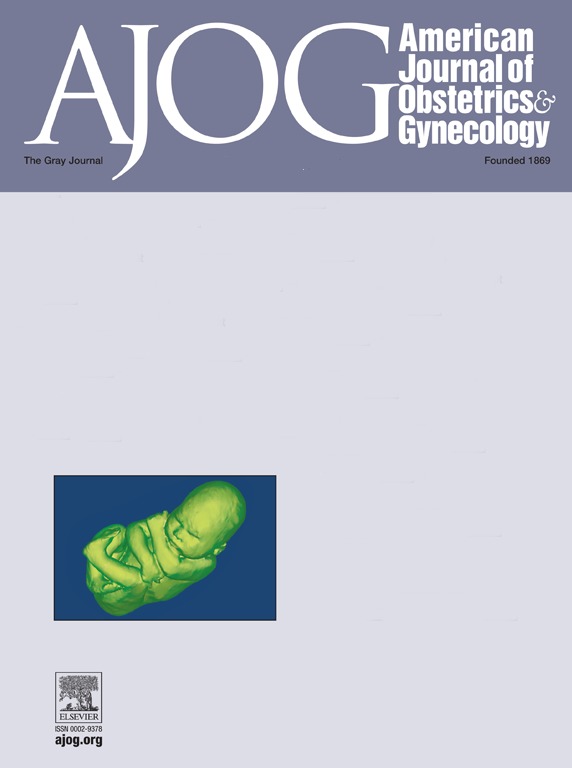The Art of Cold Knife Conization: A Demonstration of Technique in Live Patients and a Low-Fidelity Simulation Model.
IF 8.7
1区 医学
Q1 OBSTETRICS & GYNECOLOGY
引用次数: 0
Abstract
Cervical excision via cold knife conization is recommended in circumstances such as adenocarcinoma-in-situ or predominantly endocervical high-grade dysplasia. A successful cold knife conization involves visualization, targeting of the pathology, obtaining an unfragmented specimen, and consideration of post-excision endocervical curettage. This video demonstrates cold knife conization techniques to facilitate pathologic analysis and a low-fidelity simulation model for learners. The video depicts two cold knife conizations in nulliparous patients with 1) high-grade lesion on endocervical curettage, and 2) high-grade dysplasia on ectocervical biopsy. Additionally, we demonstrate a low-fidelity simulation model that can be utilized to familiarize physicians with the conization procedure and essential hemostatic techniques. While the authors acknowledge limitations of the model to include lack of bleeding, corresponding patient cases demonstrate essential hemostatic techniques. Utilizing standard surgical instruments, cold knife conization was performed for both patients allowing for excision of an appropriately sized intact specimen. Differences in technical approach when excising the ectocervix vs. the endocervix were detailed. Endocervical curettage was performed following specimen removal, and the tissue bed was made hemostatic. Both conizations were performed without complication and negative margins were achieved. In the simulation model, easily obtainable supplies, including small cups, balloons, cling wrap, cotton balls, and hot dogs were utilized to create an imitation cervix. This can allow for demonstration and practice with suture placement, excision of an intact specimen, and hemostatic techniques. Utilizing proper technique for adequate cold knife conization specimens facilitates pathologic analysis of dysplasia, cancer, and margin status. Negative margins have a significant impact on recurrence and need for future cervical procedures, which may affect future obstetric outcomes. Low-fidelity simulation models can provide accessible avenues for technical familiarization and training in this procedure.冷刀锥化术:在活体患者中的技术演示和低保真仿真模型。
对于原位腺癌或主要为宫颈内高级别不典型增生的患者,建议采用冷刀锥切法进行宫颈切除。一个成功的冷刀锥形包括可视化,病理目标,获得一个完整的标本,并考虑切除后宫颈内膜刮除。本视频演示了冷刀锥化技术,以方便病理分析和低保真度模拟模型的学习者。该视频描述了两例未生育患者的冷刀锥切术,1)宫颈内膜刮除时高度病变,2)宫颈外活检时高度发育不良。此外,我们展示了一个低保真度的模拟模型,可以用来让医生熟悉锥形手术和基本的止血技术。虽然作者承认该模型的局限性,包括缺乏出血,相应的患者病例证明了必要的止血技术。使用标准的手术器械,对两名患者进行冷刀锥切术,允许切除适当大小的完整标本。详细介绍了切除宫颈外和宫颈内的技术方法的差异。取标本后行宫颈内膜刮除,组织床止血。两种手术均无并发症,切缘均为阴性。在模拟模型中,利用容易获得的物品,包括小杯子、气球、保鲜膜、棉球和热狗来制作模拟宫颈。这可以演示和实践缝线放置,完整标本切除和止血技术。利用适当的技术进行足够的冷刀锥切标本,有助于对不典型增生、癌症和边缘状态进行病理分析。阴性切缘对复发率和未来宫颈手术的需要有重大影响,这可能影响未来的产科结果。低保真仿真模型可以为该程序的技术熟悉和培训提供可访问的途径。
本文章由计算机程序翻译,如有差异,请以英文原文为准。
求助全文
约1分钟内获得全文
求助全文
来源期刊
CiteScore
15.90
自引率
7.10%
发文量
2237
审稿时长
47 days
期刊介绍:
The American Journal of Obstetrics and Gynecology, known as "The Gray Journal," covers the entire spectrum of Obstetrics and Gynecology. It aims to publish original research (clinical and translational), reviews, opinions, video clips, podcasts, and interviews that contribute to understanding health and disease and have the potential to impact the practice of women's healthcare.
Focus Areas:
Diagnosis, Treatment, Prediction, and Prevention: The journal focuses on research related to the diagnosis, treatment, prediction, and prevention of obstetrical and gynecological disorders.
Biology of Reproduction: AJOG publishes work on the biology of reproduction, including studies on reproductive physiology and mechanisms of obstetrical and gynecological diseases.
Content Types:
Original Research: Clinical and translational research articles.
Reviews: Comprehensive reviews providing insights into various aspects of obstetrics and gynecology.
Opinions: Perspectives and opinions on important topics in the field.
Multimedia Content: Video clips, podcasts, and interviews.
Peer Review Process:
All submissions undergo a rigorous peer review process to ensure quality and relevance to the field of obstetrics and gynecology.

 求助内容:
求助内容: 应助结果提醒方式:
应助结果提醒方式:


